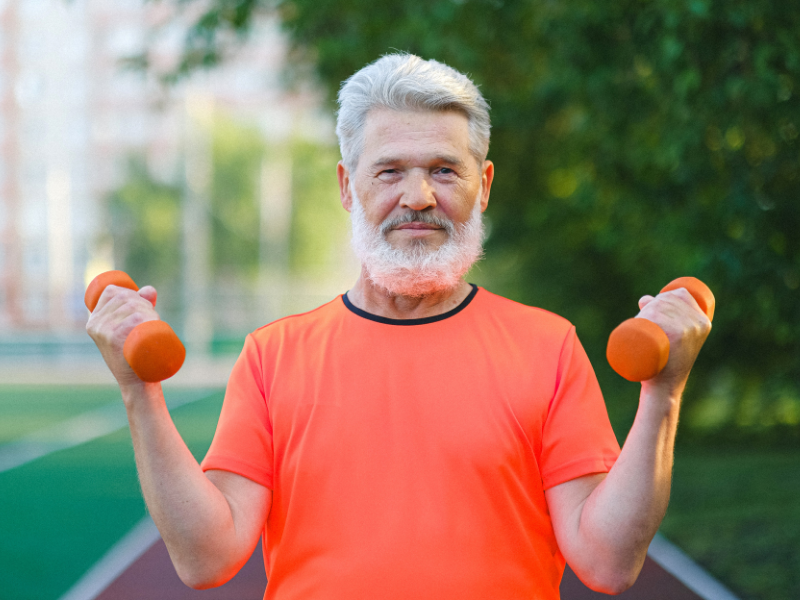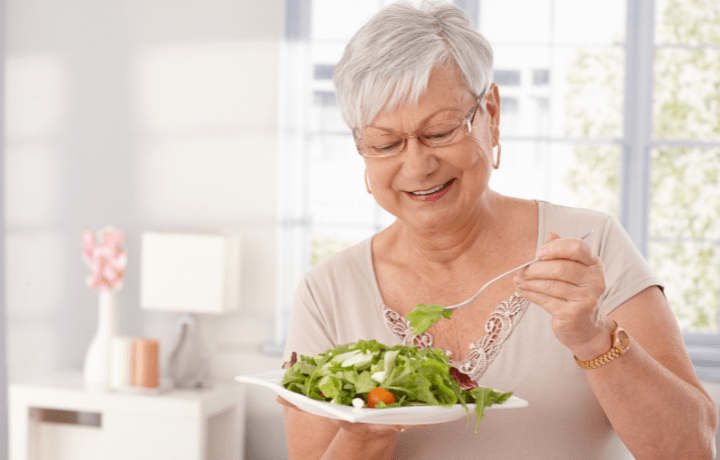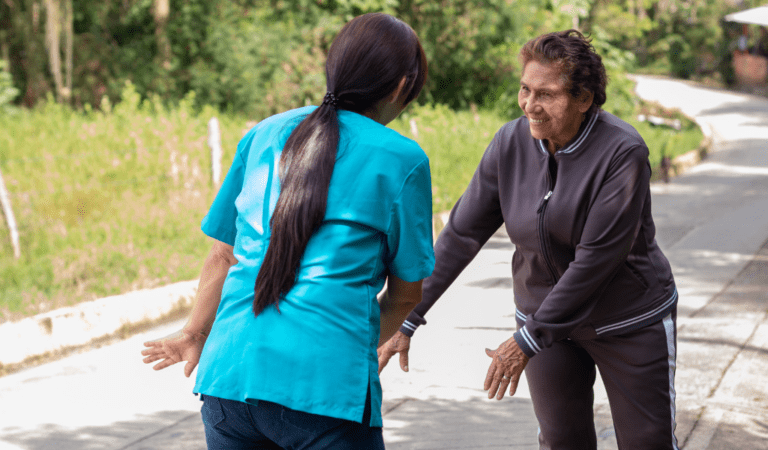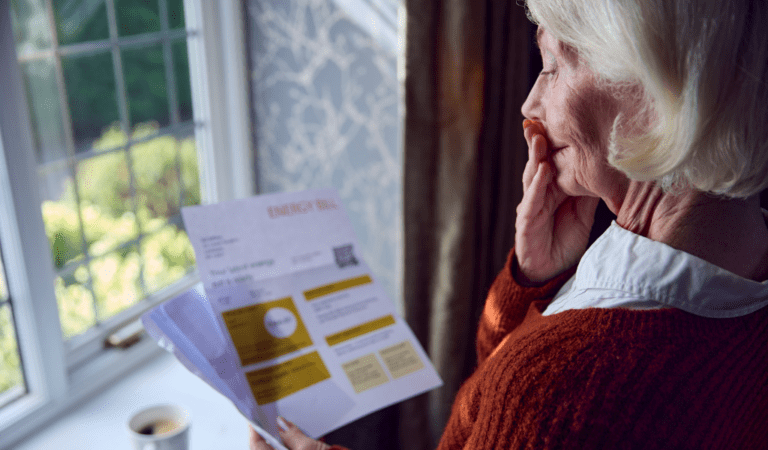Schedule a tour now
Living an active life is healthier than living a sedentary one! As we age, our biology changes. For seniors, this means moving into a new chapter of fitness. In order to live a longer, healthier life, physicians and researchers recommend seniors remain as active as possible!
Benefits of Exercise for Older Adults
Being active boosts the body’s natural immune system. Not only does exercise help you feel better, but it can also help us enjoy a higher quality of life. Exercising and staying fit later in life can also help seniors:
- Maintain Independence – Staying active promotes better balance, helps seniors maintain the ability to stay mobile, and leads to less assistance with activities of daily living.
- Better Control of Chronic Disease Symptoms – Common diseases among older adults include heart disease, osteoporosis, depression, and diabetes. Being active can contribute to the prevention of these deadly diseases, or reduce the symptoms of these diseases altogether.
- Decrease Pain and Depression – Any amount of exercise promotes the release of endorphins, which are essentially “feel-good” chemicals. This also promotes a positive sense of well-being. Endorphins combat stress hormones, promote healthy sleep, and make you feel more awake and energetic.
- Improve Brain Function – The mind and body are very closely linked, and a healthy body likely means a healthy mind. Research shows that seniors that exercise on a regular basis have improved cognitive health throughout their lives.
- Maintain Muscle Mass & Bone Density – As we age, we tend to lose muscle mass due to lack of mobility. Additionally, because bone is living tissue, it also changes over time. Exercise plays a vital role in maintaining strong muscles and bones, which is very important as we age!
- Prevent Falls – Exercise improves your balance, posture, and flexibility, which can help reduce the risk of falls.
Best Exercises for Seniors
Exercise is crucial for seniors, but it can be hard to know where to begin. Fears about falls, or injury can make exercise seem like a daunting task. Before you launch into a workout, check with your doctor to ensure you’re healthy enough for exercise, and to see which activities are ideal for your current fitness level. You may also want to consider working with a fitness professional — they can teach new exercises and give you peace of mind knowing that someone is there to provide support if you need it.
Here are some common examples of safe and easy workouts that can help seniors stay active and healthy:
Water Aerobics for Seniors
Water aerobics is a type of resistance training done in a pool. Exercising in the water is ideal for those living with arthritis and other forms of joint pain, as the buoyancy of the water puts less stress on your joints. Water aerobics exercises can help to improve your strength, flexibility, and balance with minimal stress on your body.
Great water aerobics exercises for older adults include:
- Aqua Jogging – This low-impact exercise gets the heart pumping and blood flowing throughout the body. It can involve jogging through the water from one side of the pool to the other or modified to simply walking back and forth in the pool, jogging, or marching in place. The goal is to get the heart rate up and keep it elevated!
- Flutter Kicking -This is a great low-impact cardio exercise that can be performed with or without a kickboard. Hold a kickboard out in front of you and flutter kick your legs to propel you back and forth across the pool. If one is not available, perform a front float with your head above water while holding onto the side of the pool and flutter kick your legs. Whichever way you choose, be sure to kick at a steady tempo that gets the heart pumping but doesn’t tire the body too quickly.
- Leg Lifts – This exercise uses the resistance of the water to work all of the muscles in the legs. Stand in the pool and lift one leg out to the side and back down. Continue the exercise until the leg feels fatigued or for 15 repetitions, then switch legs. Not only does this exercise work the legs, but it also improves balance and strengthens your core.
- Standing Water Push-Ups – Water push-ups are a great way to build arm, chest, and shoulder strength without putting too much pressure on the joints. Stand along the side of the pool and place your hands a little wider than shoulder-width apart on the edge of the pool. Bend your arms and lean in toward the wall, then push yourself back out. Repeat this exercise slowly.
- Arm curls – Stand in the pool (use water weights for extra resistance or no weights depending on fitness level). Hold your arms out in front of you with palms facing out. Curl the weights up then back down and repeat until fatigued. You can also perform this exercise with your palms facing toward you instead of away with the same curling motion.
Resistance Band Exercises for Seniors
Resistance bands are stretchy strips of rubber that add resistance to workouts with reduced stress on your body. Resistance band workouts are user-friendly and ideal for at-home exercise. Additionally, these exercises are ideal for strengthening your core, which improves posture, mobility, and balance.
Resistance band workouts for Seniors include:
- Leg Press – Sit on a sturdy chair with your back straight. Hold both ends of the resistance band and place your right foot in the middle of your band (your band should not be on the floor but your left foot should be flat on the ground). Bend your right knee towards you and then straighten it again in front of you. Return to the starting position and switch to the other leg. Repeat about 10-15 times with each leg.
- Triceps Press – While standing, place the resistance band under your right heel. Hold the other end of the band with both hands and stretch it so you hold both ends behind your right ear. Pull it above your head and then release it back behind your ears. Repeat about 10 to 15 times on each side.
- Lateral Raise – While standing, step on the middle of your resistance band with both feet flat on the floor. Grip both handles of your band. Raise both arms to the side at the height of your shoulder and then return to the starting position. Repeat about 10 to 15 times.
- Bicep Curl – Step on the middle of your resistance band with your feet flat on the floor. Grip both ends with your hands. Raise your arms to the height of your chest in front of you and then return to the starting position. Repeat about 10 to 15 times. You can either do this while seated or standing.
- Band Pull Apart – Stand with your feet shoulder-width apart while holding your resistance band with both hands out at arm’s length in front of you. Pull the band apart, moving your hands and arms laterally away from your shoulders. Keep the band at chest height throughout, and return your hands to the starting position when they have reached their full extent. Repeat about 10 to 15 times.
Pilates for Seniors
Pilates is a method of exercise that consists of low-impact flexibility and muscular strength with endurance movements. It emphasizes breathing, alignment, concentration, and core strength and typically involves mats, pilates balls, and other inflated accessories to help build strength without the stress of higher-impact exercises. Pilates has been shown to improve balance, develop core strength and increase flexibility in older adults.
Some great pilates exercises for seniors include:
- Mermaid Movement – Sit on your mat with both legs folded to the left side. Place the right hand on the floor to give the body support. While keeping the left shoulder down, extend the left arm straight up and lengthen the spine as the body stretches to the side. The right (support) hand will move farther away from the body to increase the stretch but be sure you aren’t over-challenging your body. To return back to the starting position, send the left sit bone down and then engage the core to bring the torso up. Repeat on the other side to complete the full movement.
- Side Circles – This can improve hip joint flexibility and balance. Lie on your side and extend your leg towards the ceiling (without causing discomfort). Move your leg counterclockwise in small circles, and then clockwise in small circles. Lower your leg and repeat with the other leg.
- Leg Circles – Lie down on your back with your arms by your sides, palms facing down, legs extended. Lift one leg and bend the knee to your chest, then up to 90 degrees with the toe pointing upwards and flex your foot. The other leg is straight on the mat, toes pointed. Move the leg that’s in the air across your body, then down and around forming a circle, back to 90 degrees. Repeat and reverse the circle multiple times, then switch legs and perform circles in each direction. Try to keep your circle as large as you can, while still maintaining a stable pelvis.
- Side Lying Circles – Lie on one side with your body in a straight line, your bottom arm extended straight up past your head. Rest your head on your bottom arm and squeeze your abdominals to pull in your belly. Keeping your hips directly over each other, lift your top leg to about hip height and move your leg in small clockwise circles in the air. Pause, then perform the circles in a counterclockwise motion. Lower your leg to return to start, then repeat on the opposite side.
Walking for Seniors
One of the least stressful and accessible forms of exercise is walking. For some seniors, walking is a bigger challenge than others, so distance and step goals differ from person to person. For the general population, 10,000 steps per day is advised for a healthy lifestyle, but those with difficulty walking or joint pain may set smaller, more attainable goals. Walking promotes a healthy lifestyle while strengthening muscles, lowering your risk of heart disease, stroke, diabetes, and colon cancer.
Some tips for walking exercises for seniors include:
- Find a moderate trail through a park
- Walk the perimeter of a familiar building
- Have friends or family join you on your walk
- Listen to an audiobook or a playlist for encouragement during your walk
Bodyweight Exercises for Seniors
Muscle loss can be devastating and debilitating for seniors. Around one-third of seniors live with severe muscle loss, which can lead to hormone problems, a decrease in the ability to metabolize protein, and other problems. Bodyweight workouts are one of the best ways to counteract the effects of muscle atrophy in older adults. One of the key benefits of bodyweight workouts is affordability. The materials required for bodyweight workouts are minimal; most bodyweight workouts require workout clothes and a mat to soften the impact with the floor.
Some great bodyweight workouts for seniors include:
- Chair Squats – Stand in front of a sturdy chair that doesn’t fold, with your back to the chair and feet hip-width apart. Keep your chest upright as you push your hips back and bend your knees to lower your body toward the chair. You can either touch the chair or sit all the way down on it. Pause, then push up through your feet and squeeze your glutes to return to the starting position.
- Bird / Dog – Get on all fours with your hands directly under your shoulders and your knees under your hips. Keep your back flat and abdominals tight as you lift one hand to reach straight in front of your shoulder while lifting your opposite foot straight behind your hip. Your arm, leg, and body should be in a straight line. Hold this position for three breaths (or as long as you can maintain balance), then lower your hand and foot toward the floor to return to the starting position. Repeat on the opposite side to complete one rep. Complete more reps and be sure to rest 30 to 60 seconds between sets.
- Step-Ups – If you have stairs or a sturdy low box, stand directly in front of it. Raise one foot (your starting foot) onto the step and then the other foot, so both feet are resting on the step. Then lower your starting foot back to the floor and then the other foot, so both feet are resting on the floor. Do several repetitions with the same starting foot, then switch.
- Wall Push-Ups – Stand about two feet away from the wall. Put your hands against it at shoulder height and shoulder-width apart. Keep your body in a straight line as you bend your elbows diagonally to your sides to lower your chest to the wall. Let your heels come off the floor. Pause, then slowly press through your hands to straighten your elbows and return to the starting position and repeat several times while resting 30 to 60 seconds in between.
Dumbbell Workouts for Seniors
Dumbbell exercises are some of the best ways for seniors to strength train, as long as they are performed with the proper precautions. Strength training has been shown to alleviate the symptoms of diabetes, osteoporosis, back pain, and depression while helping you manage or maintain your weight. Strength training also contributes to a higher metabolism and enhanced glucose control. Strength training with dumbbells allows seniors to isolate muscle groups while improving balance and flexibility.
Some ideal dumbbell workouts for Seniors include:
- Bent-Over Rows – Stand with your legs shoulder-width apart and knees slightly bent. Hold a dumbbell in each hand, also at shoulder-width, with your palms facing each other. Bend over at a 45-degree angle (no lower) and take a deep breath in. Pull the dumbbells straight up, toward the sides of your chest, on an exhale. Take the upper arms no higher than parallel with the shoulders (slightly lower than the shoulders is fine). While lifting, keep the wrists from moving as much as possible. Lower the weights in a controlled manner to the starting position as you inhale. Remain bent over until all repetitions are complete.
- Tricep Extension – Lie face up on a flat gym bench with your entire body on the bench, except your lower legs. Your knees should be bent with your feet flat on the floor. Arms are extended above the chest, elbows shoulder-width apart (not locked), and both hands are holding one end of a dumbbell. Flex your elbows and lower the weight down toward the top of your head. Your upper arms should remain relatively perpendicular to your body. This keeps the tension on the triceps versus shifting it to the shoulders. Continue lowering the weight behind your head. The bottom of the dumbbell head should be about in line with the bench’s top (or even a little higher if this feels difficult). Reverse the movement until the weight is above your chest in the original starting position and repeat. Be sure not to lock your elbow to maintain tension in your triceps muscle.
- Overhead Press – Stand upright and keep your back straight. Hold a dumbbell in each hand, at your shoulders, with an overhand grip. Your thumbs should be on the inside and knuckles face up. Exhale as you raise the weights above your head in a controlled motion. Pause briefly at the top of the motion. Inhale and return the dumbbells to the starting position at your shoulders.
- Front Raise – Stand with your feet about shoulder-width apart and let your arms hang in front of you with the dumbbells in front of your thighs (palms facing your thighs). Your back should be straight with your feet planted flat on the floor, and your abdominal muscles are engaged. Lift the weights upward while inhaling. Your arms should then be extended with palms facing down and a slight bend in your elbows to reduce the stress on the joints. Pause briefly when your arms are horizontal to the floor. Lower the dumbbells to the starting position at your thighs with a slow and controlled motion while exhaling.
Contact Our Michigan Senior Living Community
Vicinia Gardens is a long-term senior living community that is committed to maximizing the enjoyment of our residents by providing a supportive environment with the highest level of care. There is nothing that brings us more joy than promoting the health, independence, and social interaction of our residents.
We have campuses on both the east and west sides of lower Michigan that offer safe and private accommodations for seniors who range from total independence to full assistance with daily living due to dementia. Vicinia Gardens has everything your loved one will need — all for an affordable price!
For more information, or to schedule your own tour of our facilities, please contact us or call our Fenton location at 810-359-4055 or our Otsego location at 269-641-4541.






